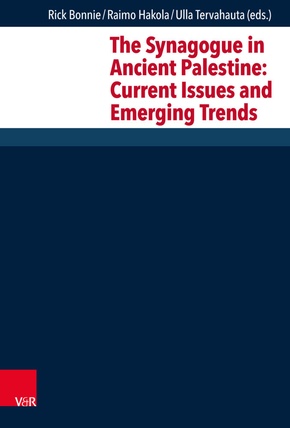
The Synagogue in Ancient Palestine: Current Issues and Emerging Trends
| Verlag | Vandenhoeck & Ruprecht |
| Auflage | 2020 |
| Seiten | 419 |
| Format | 16,2 x 3,3 x 23,7 cm |
| Gewicht | 857 g |
| Artikeltyp | Englisches Buch |
| Reihe | Forschungen zur Religion und Literatur des Alten und Neuen Testaments Band 279 |
| ISBN-10 | 3525522142 |
| EAN | 9783525522141 |
| Bestell-Nr | 52552214A |
This book brings together leading experts in the field of ancient synagogue studies to discuss the current issues and emerging trends in the study of synagogues in ancient Palestine.
Archaeological, textual, historical and art historical methodologies to questions related to ancient synagogues
This book brings together leading experts in the field of ancient synagogue studies to discuss the current issues and emerging trends in the study of synagogues in ancient Palestine. Divided into four thematic units, the different contributions apply archaeological, textual, historical and art historical methodologies to questions related to ancient synagogues.
Part One addresses issues related to the origins and early development of synagogues up to 200 CE. The contributions provide different explanations to the alleged lack of evidence for synagogues built in the second and third centuries CE and ask how much continuity or change there is between the late Second Temple and late Roman/early Byzantine synagogues. Part Two deals with architecture and dating of ancient synagogues. It gives an overview of all synagogues found so far, approaches the dating of Galilean synagogues in the light of the recently-exposed synagogue at Huqoq, and provides a stylistic re-evaluation of the Capernaum synagogue decoration.
Part three examines leadership, power and daily life in late antique synagogue contexts, illustrating non-monumental inscriptions, amulets and dining in synagogue contexts as well as the role of individual benefactors. Section four contextualizes synagogue art. An overview of synagogue mosaics in late antique Palestine is complemented with reinterpretations of the mosaics two synagogues. The section also offers a discussion of the appearance of the menorah.
